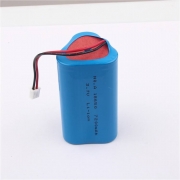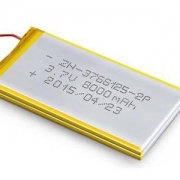Why 18650 Lithium Batteries Are Burning Or Exploding
1. Internal short circuit: Structural or process defects lead to the insertion of the tabs, too little excess diaphragm wrapping, burrs, and diaphragm discounts, etc. The insertion of the tabs often occurs in the structure of thick batteries and internal parallel connection, and the insulation of the tabs is not in place. Adding a protective plate to the subsequent finished product or using the process can easily lead to an acute short circuit inside the battery, resulting in burning or explosion, but now this situation is almost Less, unless external factors.
2. External short circuit: The explosion after combustion caused by the external short circuit of the lithium battery below 1AH is rare. It is usually caused by bulging or simply burning the tab. I have personally analyzed that it is caused by the external short circuit of the power battery or large-capacity mobile phone battery. combustion. This involves improper use by customers – the insulation of the tabs is not considered when installing the metal outer box, and abnormal battery smoke and combustion occur at the installation site; power batteries are also often insufficient in structural fixing measures (ill-considered), and the battery pack is used during the user’s use. Shaking will cause damage to the external insulating protective film of the battery or damage to the connecting wire skin, which will eventually lead to short-circuit burning.
3. Overcharge explosion: This is the most dangerous, and the one that enterprises are most afraid of, but it still occurs occasionally. From what I know, there are two points: a. The user does not use the matching charger as required, thereby destroying the protection circuit and the user often charges for an unlimited time, which is difficult without frying; b. 18650 lithium battery The combination is unreasonable and the protective plate fails. In this case, the explosion will be a mess. Same goes for a single battery.
4. When the 18650 lithium battery is heated, the reaction inside the battery is like a reaction chain, and each reaction promotes each other and proceeds in sequence. First, the decomposition of the SEI film releases heat and heats the battery, which promotes the reaction between the negative electrode and the solvent to release more heat, resulting in the reaction between the negative electrode and the binder and the decomposition of the solvent. Then the positive electrode begins to undergo thermal decomposition reaction, releasing a large amount of heat and gas. , and finally cause the lithium battery to burn or explode.
5. Manufacturing process. The manufacturing process of 18650 lithium battery is also an important factor affecting the safety performance of the battery, among which there are three main factors, namely positive and negative electrode capacity ratio, slurry uniformity control, and coating quality control.
6. Temperature. There are many factors that affect the safety of lithium batteries. Among them, battery materials have an important impact on the safety of lithium batteries, because battery materials are generally thermally active. When the battery temperature continues to rise, many thermal reactions will occur inside it. When the heat cannot be dissipated in time, it is easy to cause battery safety accidents, so the selection of positive and negative materials for lithium batteries has an important impact on the safety performance of the battery.







